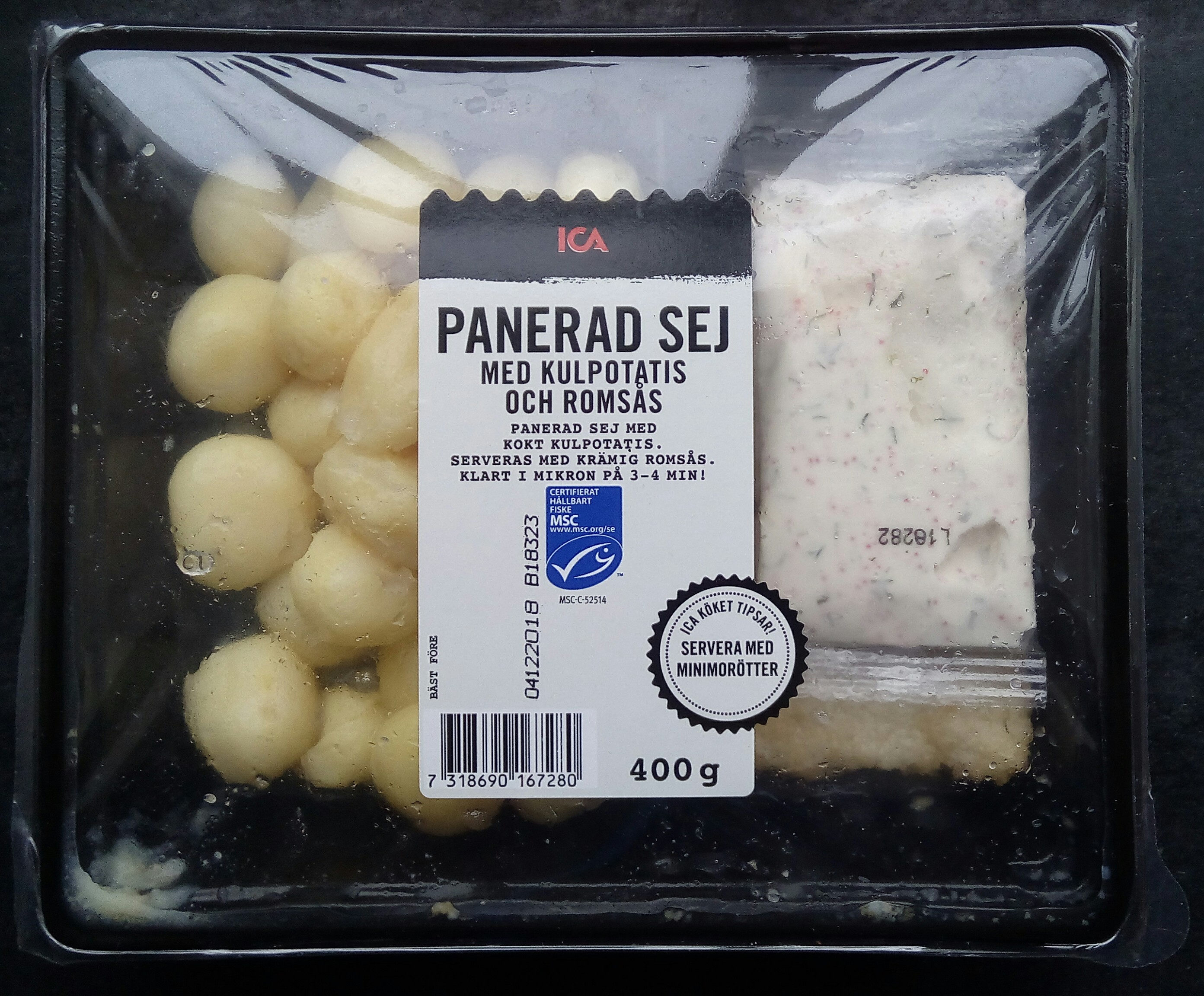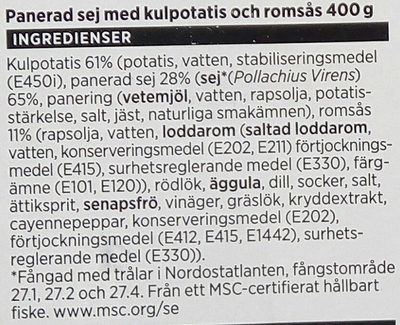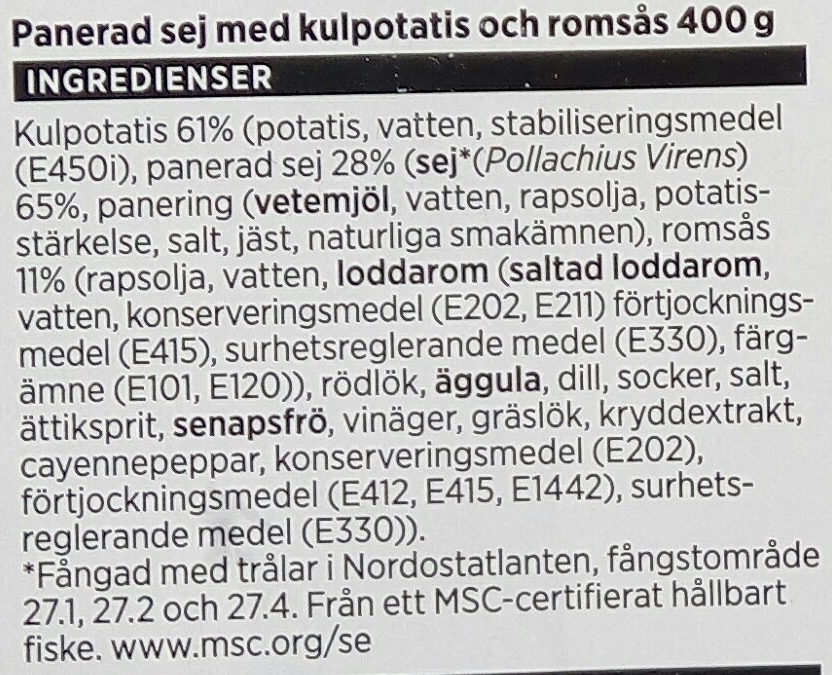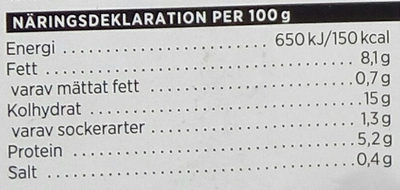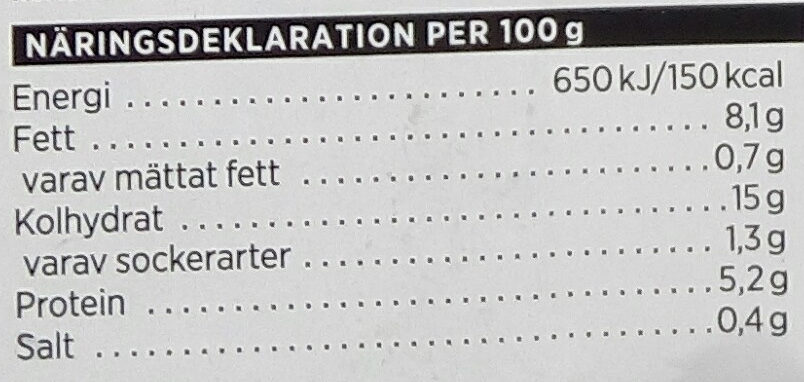ICA Panerad Sej med kulpotatis och romsås - 400 g
This product page is not complete. You can help to complete it by editing it and adding more data from the photos we have, or by taking more photos using the app for Android or iPhone/iPad. Thank you!
×
Barcode: 7318690167280 (EAN / EAN-13)
Common name: Panerad sej med kokt kulpotatis
Quantity: 400 g
Packaging: Plastic, Pp-polypropylene
Brands: ICA
Categories: Meals, Meals with fish, Refrigerated foods, Microwave meals, Refrigerated meals
Labels, certifications, awards:
Sustainable, Sustainable fishery, Sustainable Seafood MSC, sv:MSC-C-52514

Origin of ingredients: Barents sea, Norwegian Sea, North Sea, sv:North-East Atlantic
Manufacturing or processing places: Sweden
Traceability code: SE 6559 EC, MSC-C-52514
Link to the product page on the official site of the producer: https://www.ica.se/handla/produkt/fardig...
Stores: ICA Supermarket
Countries where sold: Sweden
Matching with your preferences
Environment
Packaging
Transportation
Labels
Report a problem
Data sources
Product added on by olofolleola4
Last edit of product page on by packbot.
Product page also edited by dahlqvist, openfoodfacts-contributors, roboto-app.

